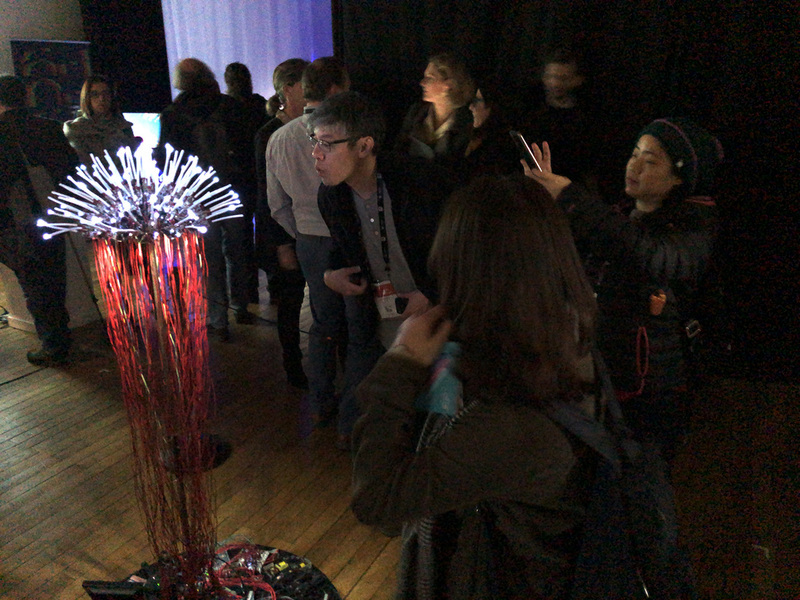Interviews

Capturing the Elegance of Organic Movement Through Animatronics (Part 3)
Akira Nakayasu
What motivated Akira Nakayasu to develop his artwork was his passion for creating something that had never been done before. But would his creations be received positively worldwide?
Interviewer & Japanese Writer: Yamamoto Takaya; Translation & Editing: Matthew Cherry
Nakayasu was selected for the 2016 INNO-vation Program’s Disruptive Challenge, bringing his idealized creations to life. Throughout the development process, his motivation to create something “exciting and never-before-seen” was unwavering.
Nakayasu had previous experience working as a video director for stage productions. At the time, projection mapping was beginning to emerge as a new technology, and Nakayasu received positive critical reception for his implementation of the technology on stage, having dancers interact with projected imagery.
It wasn’t long after his success in stage production that many other directors also started to adopt the groundbreaking tech in their productions. For Nakayasu, the novelty of doing something that had never been seen before had worn off.
That’s when he had the idea to undergo a new challenge: to replicate organic, lifelike movement without the use of CGI.
Nakayasu began working on unique art pieces such as plant, which used 169 artificial leaves that reacted to nearby hand movements, as well as Tentacles, which replicated the tentacles of sea anemone on the ocean floor. After completing these works, he began exhibiting them at conventions within Japan and overseas, though the reactions he received differed greatly depending on where the art was presented.
Overseas, Nakayasu received the praise that he longed for; that his works were “fantastic” and “amazing”. In Japan, he met his critics face-to-face. “What could this possibly be used for?” “What purpose does this serve?” Nakayasu reflected on his exhibition experiences.
“I think people overseas are more likely to react positively to something they’ve never seen before,” Nakayasu said. “What I’m doing is using robotic technology to replicate the beautiful movements we see in nature. Normal researchers usually don’t undertake things like that, which might be the reason I received the responses I did.”

Tentacle Flora, as seen on display at Laval Virtual 2019 Art & VR Gallery
Although Nakayasu’s creations are an expression of art, they have potential uses in other fields as well. One example would be its use in the medical field, specifically rehabilitation. The actuators that Nakayasu developed move in a smooth, non-linear fashion, very similar to human fingers.
“The impression you get from feeling the actuators in your hands is much more impactful than just looking at them,” Nakayasu explained. “In an ideal scenario, we could attach these actuators to gloves and use them for rehabilitation methods for finger movement.”
Finally, Nakayasu has a message for anyone out there looking to apply to the INNO-vation Program.
“If you’re out there doing research by yourself it might be hard to realize, but I think there are a lot of people in the world who really want to venture out to something out of the ordinary or unusual. The INNO-vation Program allows you to meet all sorts of people who are just like that. Even if you only speak with these people for a short time, you can create memories and impressions that last a lifetime.”
From his own personal experience, Nakayasu believes those encounters turn into the driving force behind new innovations.
Akira Nakayasu’s Profile

